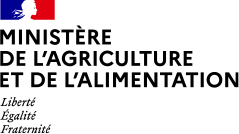Document type: Analysis Note 173 produced by the Centre d'études et de prospectives du Ministère de l'agriculture et de l'alimentation
Authors: Salomé Sengel, Estelle Midler, Jean-Noël Depeyrot
Geographical indications (GIs) are intended to improve remuneration for farmers who have undertaken to comply with the associated specifications, enabling them to be set apart by better consumer information. For some years now, the intention has been to make use of them to support the agro-ecological transition, but there is little analysis available on how they perform. This note analyses the performance of GI dairy farms in the three spheres of economics, the environment and animal welfare. [...]
No differences in animal welfare performance
For all GIs [geographical indications], the scores reveal equivalent overall animal welfare performance, whether farms are certified or not, even after the effects of farming systems and location are factored in. An indicator-by-indicator analysis allows us to study the differences in practice between certified and non-certified farms. It shows that certified farms carry out dehorning as much as non-certified farms but there is a more systematic use of painkillers to reduce pain among the former. They also use alternative veterinary treatments (aromatherapy, homeopathy, physiotherapy, etc.) more often. The removal of livestock effluent from buildings is more commonly practised (at least weekly) on GI farms. Last, GI farms allow 16% more grazing area per dairy cow than their non-GI counterparts, but grazing duration is not significantly greater. On the other hand, dairy cows on GI farms are more often kept in tethered housing systems and fewer of them have access to an exercise area. [...]
GI farms therefore provide more favourable conditions for grazing but they perform slightly less well on stabling conditions, obtaining overall animal welfare scores resembling those of non-certified farms. Current ongoing changes in the specifications could have a positive impact on animal welfare. For example, the Comté PDO will soon require a minimum number of periods of access to the outdoors in the course of the year for cows in tethered systems.




